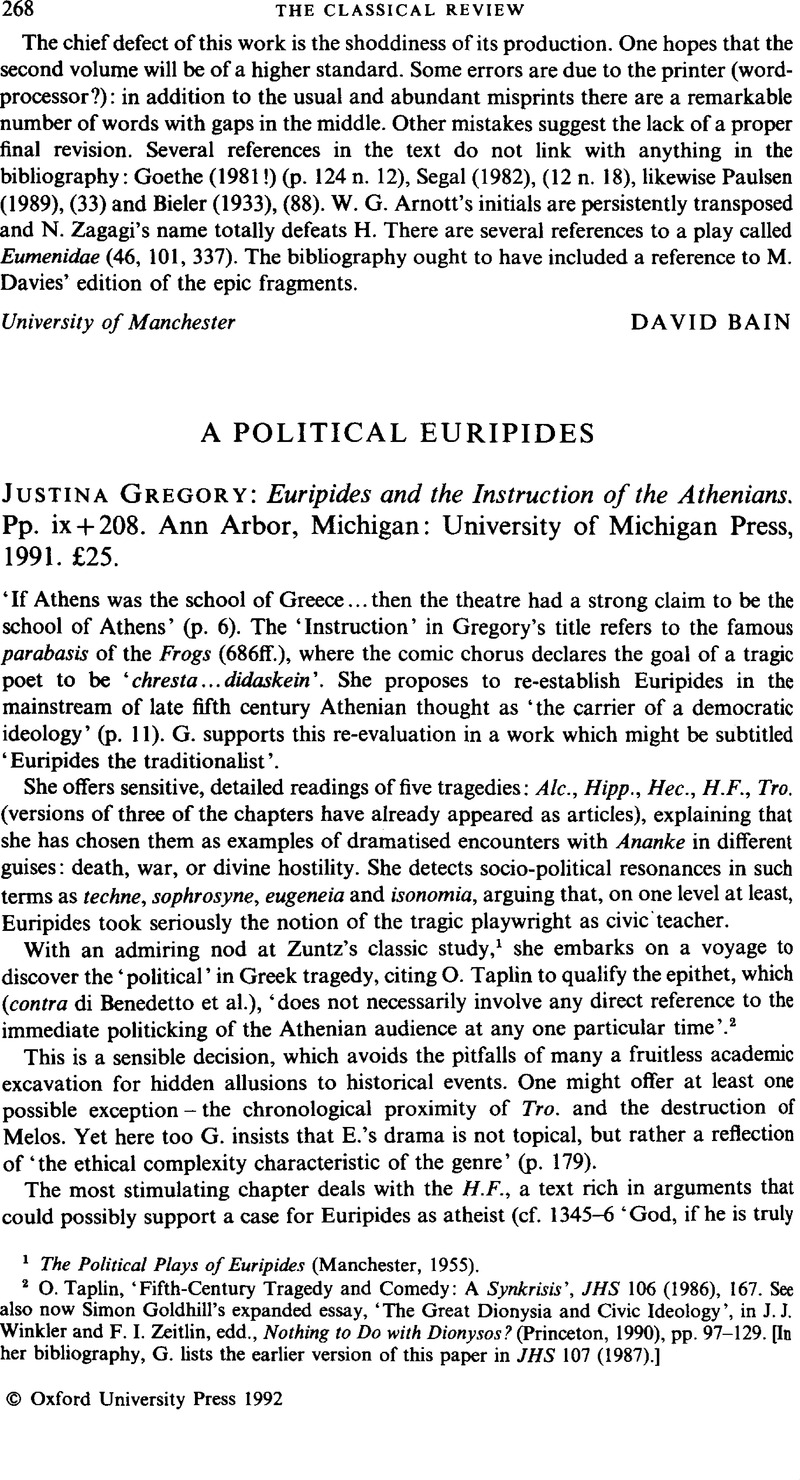No CrossRef data available.
Article contents
A Political Euripides - Justina Gregory: Euripides and the Instruction of the Athenians. Pp. ix + 208. Ann Arbor, Michigan: University of Michigan Press, 1991. £25.
Published online by Cambridge University Press: 16 February 2009
Abstract

- Type
- Reviews
- Information
- Copyright
- Copyright © The Classical Association 1992
References
1 The Political Plays of Euripides (Manchester, 1955).
2 Taplin, O., ‘Fifth-Century Tragedy and Comedy: A Synkrisis', JHS 106 (1986), 167Google Scholar. See also now Simon Goldhill's expanded essay, ‘The Great Dionysia and Civic Ideology’, in Winkler, J. J. and Zeitlin, F. I., edd., Nothing to Do with Dionysos? (Princeton, 1990), pp. 97–129Google Scholar. [In her bibliography, G. lists the earlier version of this paper in JHS 107 (1987).]
3 Dodds, E. R., ed., The Bacchae, 2nd ed. (Oxford, 1960), p. xl.Google Scholar
4 With the Andromache passage, Shirley Barlow compares Helen's self-reproaches at Il. 6.344, 356; cf. The Imagery of Euripides (London, 1971), p. 106 and n. 46. For Homeric dogs, see the detailed discussion of Schnapp-Gourbeillon, A., Lions, héros, masques: les représentations de l'animal chez Homère (Paris, 1981), pp. 162–169Google Scholar. For a discussion of untraditional elements in the deliberation scene of Od. 20, in which the dog simile occurs, see Russo, J. A., ‘Homer Against his Tradition’, Arion 7 (1968), 275–295.Google Scholar
5 Contrast Burnett, A. P., whose book on a more limited topic Catastrophe Survived: Euripides' Plays of Mixed Reversal (Oxford, 1971) analyses seven dramas.Google Scholar
6 On the Orestes scene, see the brief comments of C. Wolff, ‘Euripides’, in Luce, T. J., ed., Ancient Writers: Greece and Rome, I (New York, 1982), p. 257Google Scholar. Wolff discusses the scene more fully in Segal, E., ed., Oxford Readings in Greek Tragedy (1983), pp. 340–356.Google Scholar


